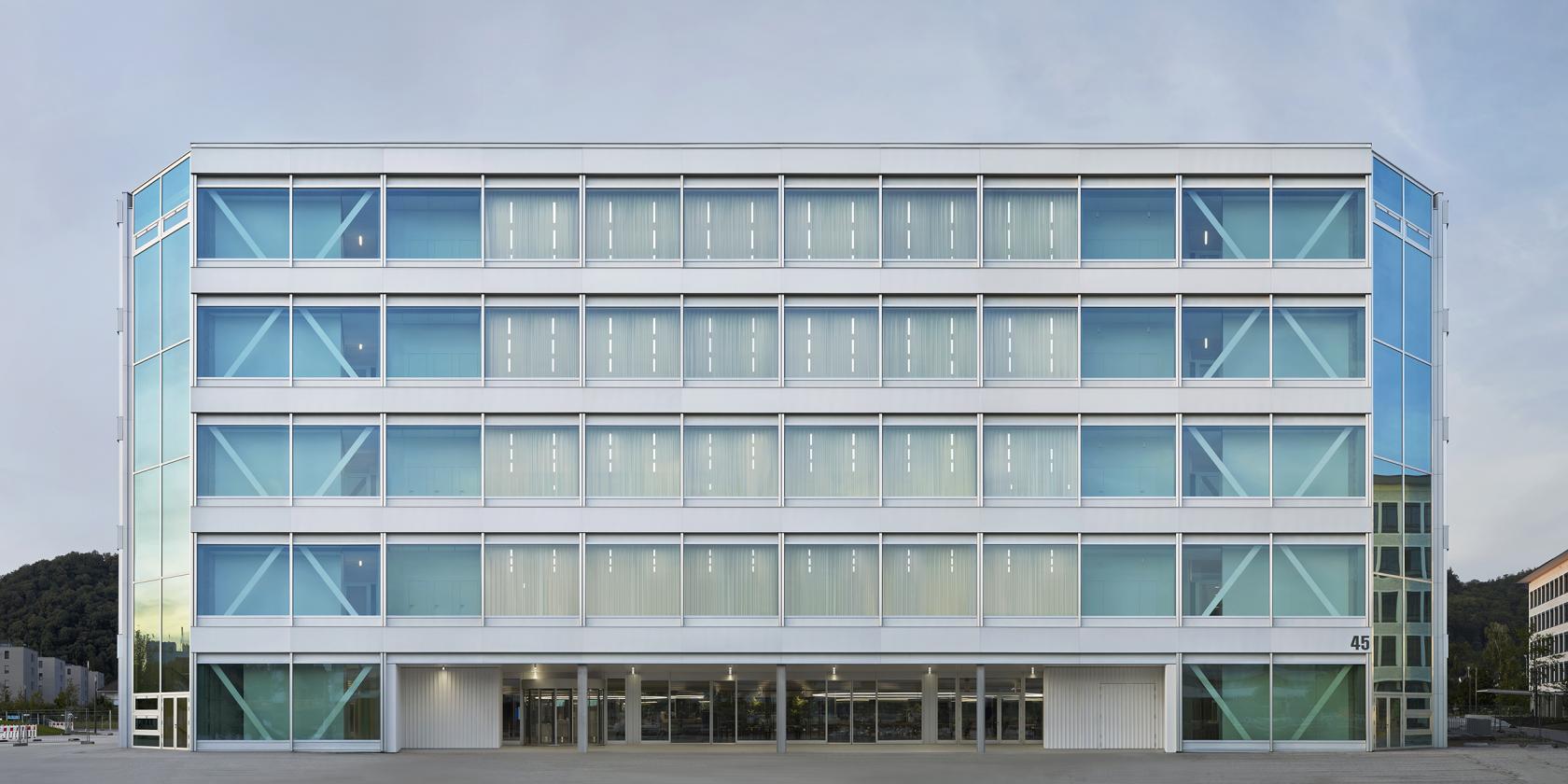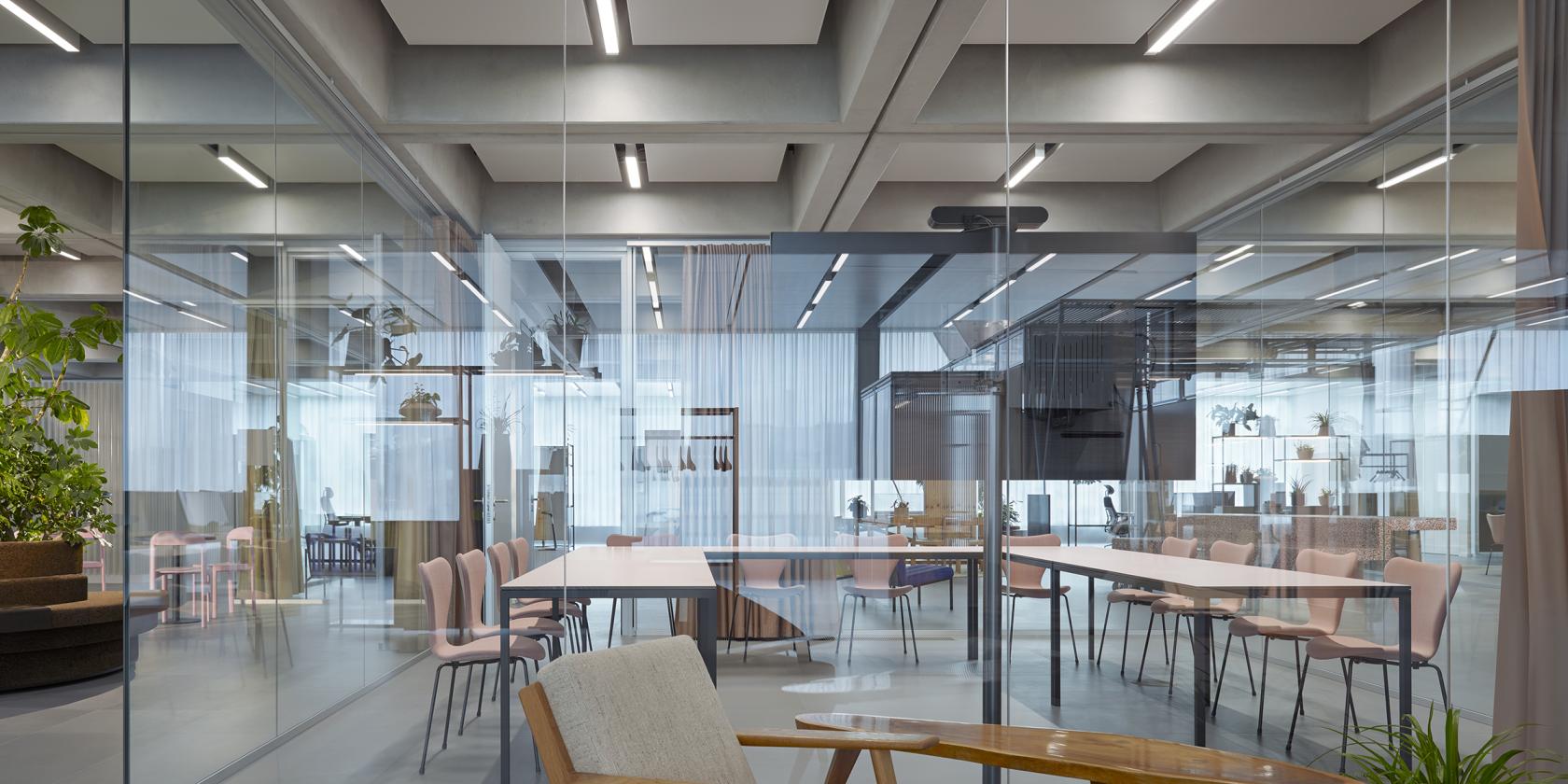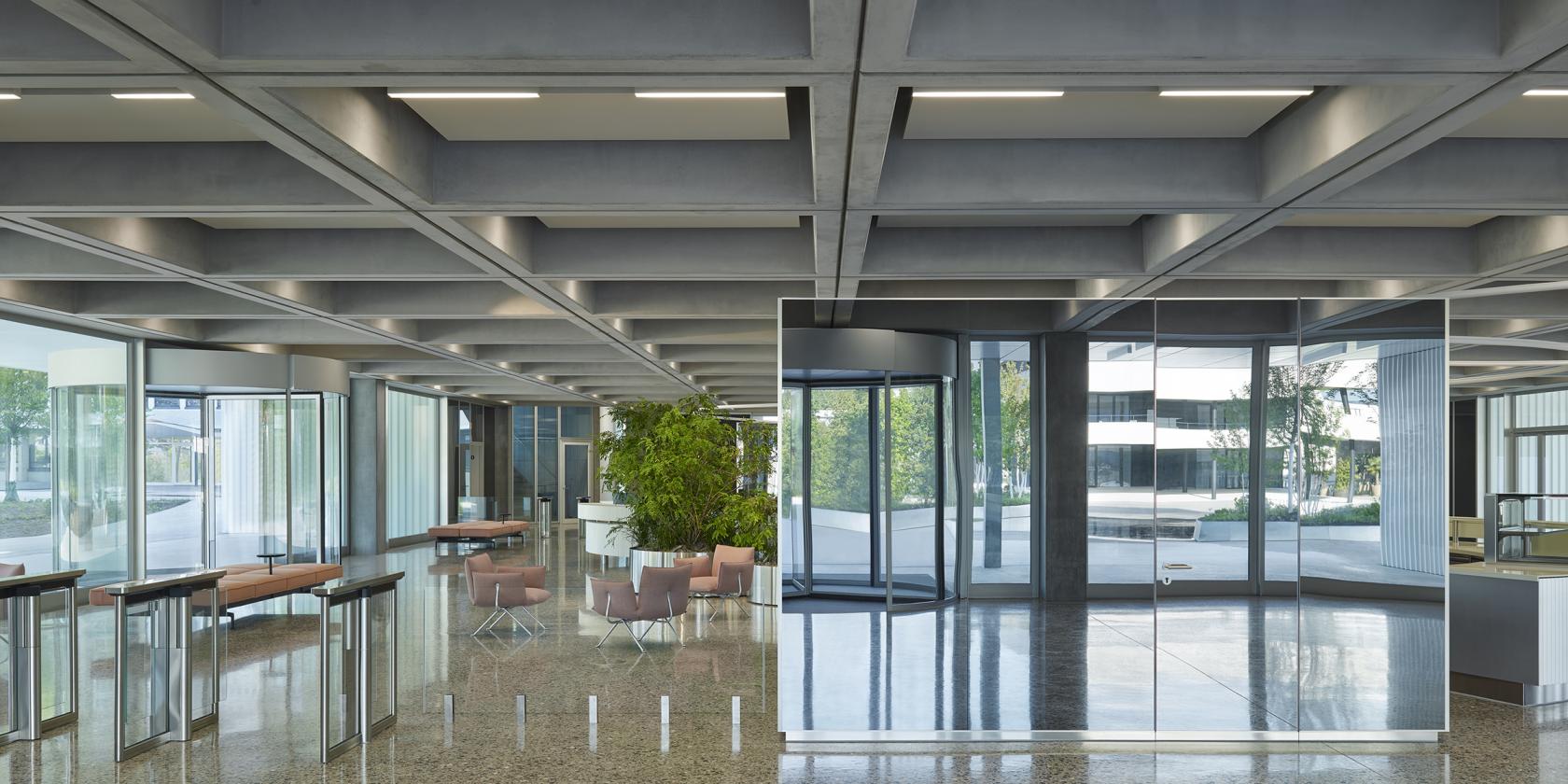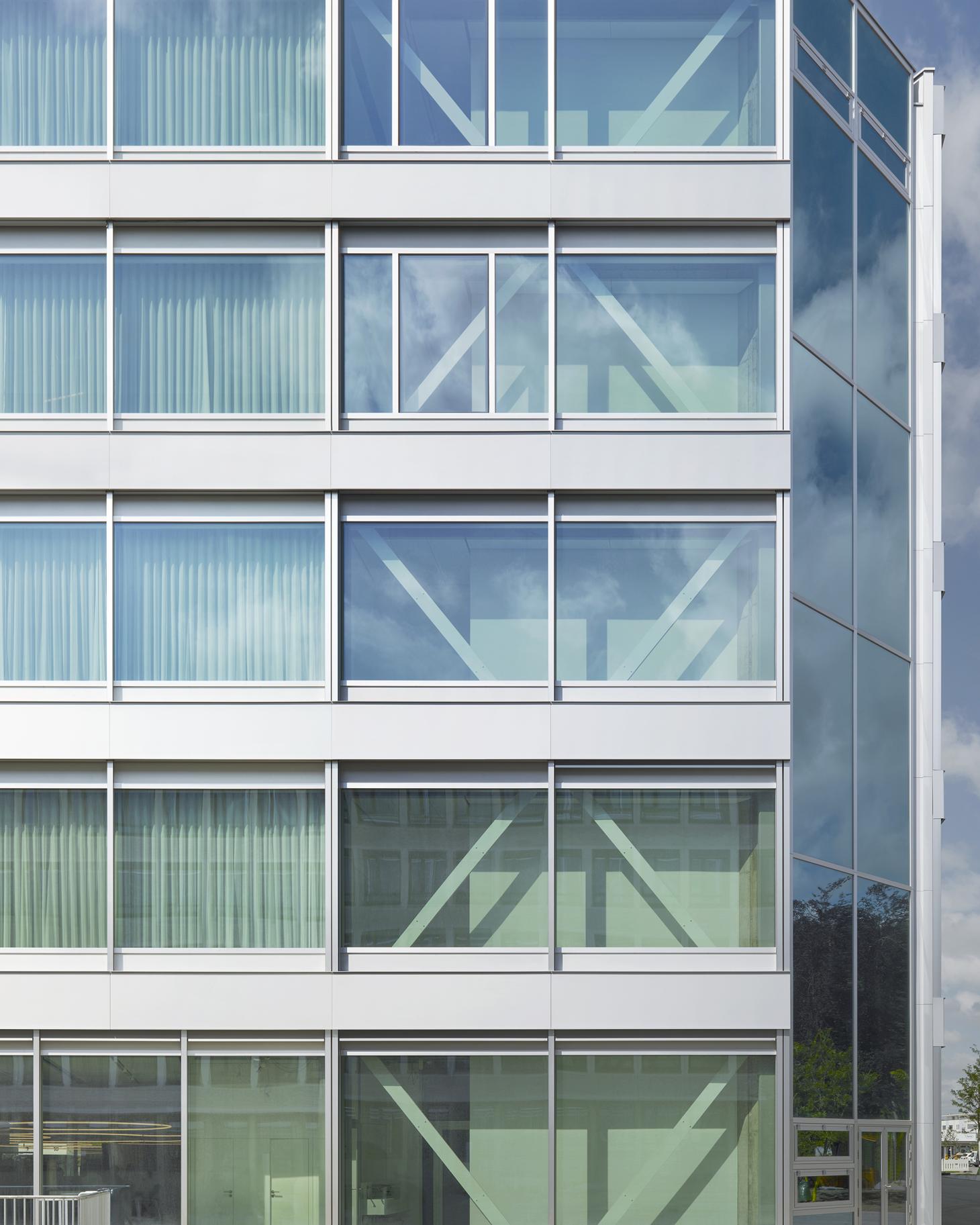- 10 December 2021
- 1720 defa okundu.
New Ways of Working: Roche Multifunctional Workspace Building
In September of 2021, after some two years of construction, the Multifunctional Workspace Building on the campus of the Roche Pharma AG in the southwest German town of Grenzach-Wyhlen, was officially declared open. Christ & Gantenbein have devised a flexible and forward-looking office building that inspires the development of new ways of working and impresses with its simple, but clear design.

Photos: Walter Mair
Already back in 2011 the Basel-based architects Christ & Gantenbein had built an office and technical installations building on the campus of the Roche Pharma AG pharmaceutical company in the southwest German town of Grenzach-Wyhlen, which lies just on border with Switzerland. Now, the new Multifunctional Workspace Building FRITZ, which gets its name from the company’s founder Fritz Hoffmann-La Roche, continues the pre-existing grid layout of the campus. Together with the equally new plazas and external spaces that surround the building, it enlarges the campus itself and creates a new centre, which is partially accessible to the public. The focus, however, must lie on the extraordinary workspace that has been created, which enables and facilitates new ways of working.

The basic idea behind the project is simple: employees can organise and, when necessary, alter their workspaces in the generous and non-hierarchical spaces as they wish. Placing the access and utility cores at the corners of the five-storey building and having the coffered ceilings prestressed in a transverse direction, allowed the creation of radically column-free interior floor spaces. This provides the highest degree of freedom in all above-ground storeys and a maximum of variability and flexibility in the design of the entire building, with unobstructed sightlines, a high level of daylight internally, transparency and spatial generosity.
The flexible floor layouts are the basis for a “work to meeting” setting and facilitate new ways of collaboration. At the same time the flowing, light-filled and column-free spaces encourage free movement within the areas, inspire encounters and interaction with others and create a relaxed working environment. All of the building’s floors are joined by the access and utility cores, which have been placed at the corners. The position of the stairwells allows for views of the surrounding hills, the neighbouring village as well as the campus in Grenzach-Wyhlen itself, and establish a connection with Roche’s industrial heritage.
Between the two workspace floors and the publicly accessible foyer on the ground floor lies the floating, two-storey Forum. This auditorium, which can be subdivided into three parts, was designed with the highest degree of flexibility in mind, as the walls of the 550-seat Forum can be dismantled.

Great flexibility within
Modular and partially movable furniture and made-to-measure spatial elements were designed and built by Basel-based design bureau INCHfurniture following a concept developed in close collaboration together with Christ & Gantenbein and Roche. The design enables hybrid working methods and allows for new ways of working to evolve, but also to retreat for meetings or focussed individual work. The functional design creates the platform for direct, authentic and not exclusively digital interaction. Its basis lies in the architecture by Christ & Gantenbein and the idea of so-called activity-based-working, which supports maximum freedom in project organisation, planning and implementation and provides employees with the flexibility to chose the best possible workspace for the task ahead.
Outwards, the composition of the facade represents a kind of “industrial palazzo”. The facade system is defined by horizontal bands and consists of aluminium panels, mullions, transoms and ribbon windows, and takes its references from the industrial background of the location. And the choice of a high-quality and sober palette of materials used is anchored in the architectural and cultural heritage of the company. But the strictly axially segmented 23-metre tall cube also reflects Christ & Gantenbein’s rational architectural vocabulary. It formulates the change from a manufacturing industrial location towards a more human-focused environment that promotes interaction and teamwork. At the same time, the vertical and crossing reinforcing elements make the specific static concept of the building recognisable and also serve as earthquake protection measures.

The Multifunctional Workspace Building meets the strictest requirements when it comes to the energy efficiency and sustainability demanded by Roche, and aspects of longevity and a resource-conserving construction are paramount. Fulfilling the task of building sustainably has been implemented by the architects in the environmentally conscious approach to the actual construction process, as well as the manufacturing of the building materials.
The decisive quality of the new building lies in its future-oriented construction, which can easily adapt its design to changing conditions and demands, or yet to be determined types of working together. The multifunctional office building offers alternatives to the classic office workspace and home office alike: it brings people together in a flexible and hybrid work environment and represents an architectural translation of the cultural change towards a hierarchy-free, completely transparent and flexible “new way of working”.

